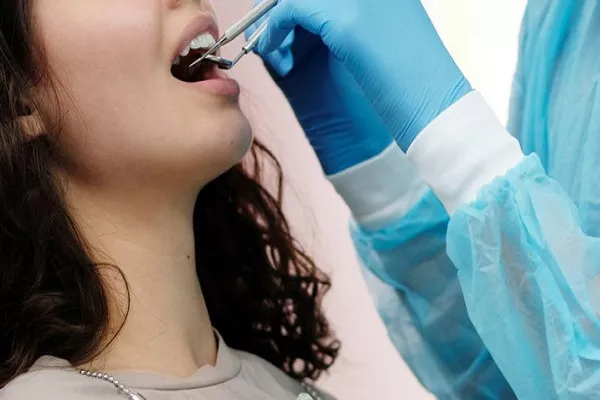Maintaining good oral hygiene is essential for a healthy and confident smile. However, despite regular brushing and flossing, some individuals may develop black tartar on their teeth, which can be both unsightly and harmful to oral health. Black tartar, also known as dental calculus, is a hardened form of dental plaque that builds up on teeth over time. In this article, we will explore the causes of black tartar, its potential consequences, and effective methods for its removal, helping you restore the natural brilliance of your smile.
Understanding Black Tartar Formation
Black tartar typically develops when dental plaque, a sticky film composed of bacteria, food particles, and saliva, is not adequately removed from the teeth. As plaque accumulates, it can mineralize and harden, transforming into tartar. Several factors contribute to the formation of black tartar:
Poor Dental Hygiene: Inconsistent or inadequate brushing and flossing allow plaque to accumulate and solidify into tartar.
Smoking and Tobacco Use: Tobacco products can contribute to the buildup of black tartar due to their impact on oral health.
Staining Foods and Beverages: Frequent consumption of staining substances like coffee, tea, and certain fruits can promote tartar formation.
Inadequate Dental Cleanings: Skipping or infrequent dental cleanings can allow tartar to accumulate unchecked.
Consequences of Black Tartar
Leaving black tartar untreated can have various consequences for oral health:
Tooth Decay: Tartar provides a rough surface for plaque to adhere to, increasing the risk of tooth decay and cavities.
Gum Disease: Tartar buildup irritates the gum line, leading to gingivitis (inflammation of the gums) and, if left untreated, potentially progressing to periodontitis, a more severe form of gum disease.
Bad Breath: Accumulated tartar can contribute to persistent bad breath, known as halitosis.
Discoloration: Black tartar can cause significant discoloration of teeth, impacting the aesthetics of one’s smile.
Effective Methods to Remove Black Tartar
Removing black tartar requires a combination of professional dental care and consistent oral hygiene practices. Here are some effective methods to combat black tartar:
Professional dental cleanings, typically performed every six months, are essential for preventing and removing black tartar. A dental hygienist or dentist uses specialized tools to carefully scrape and remove tartar from the teeth and gum line during these cleanings.
Adopting a proper brushing technique is crucial for preventing and controlling tartar formation. Follow these steps for effective brushing:
Regular flossing helps remove plaque and food particles from between teeth, preventing tartar formation in hard-to-reach areas.
Using an antiseptic mouthwash can help control bacteria and reduce plaque, which can contribute to black tartar formation. However, mouthwash should be used as a supplementary aid and not a substitute for brushing and flossing.
Some whitening toothpaste contains mild abrasives that can help remove surface stains and small amounts of tartar. However, they may not be as effective as professional cleaning for extensive tartar removal.
Preventing Black Tartar Formation
Preventing black tartar formation is crucial for maintaining good oral health and a bright smile. It involves adopting healthy oral hygiene habits, making conscious lifestyle choices, and seeking regular professional dental care. Here’s a more detailed discussion on preventing black tartar formation:
Brushing Technique:
Proper brushing is the foundation of good oral hygiene. Follow these steps to ensure effective plaque removal and prevent tartar formation:
Brush at least twice a day: Brushing in the morning and before bedtime helps remove plaque and bacteria that accumulate during the day and night.
Use a soft-bristled toothbrush: A soft brush is gentle on the teeth and gums, preventing damage to the enamel while effectively cleaning the surfaces of the teeth.
Angle the brush correctly: Angle the toothbrush at a 45-degree angle towards the gum line, ensuring that the bristles can reach both the teeth and the area where the gums meet the teeth.
Use gentle circular motions: Use small, gentle circular motions to clean the front, back, and chewing surfaces of each tooth. Avoid using aggressive scrubbing, as it can lead to gum recession and enamel erosion.
Brush for at least two minutes: Spend a minimum of two minutes brushing your teeth to ensure a thorough clean.
Flossing:
Regular flossing complements brushing by removing plaque and food particles from between the teeth and beneath the gum line, where a toothbrush cannot reach effectively. Follow these steps for proper flossing:
Use enough floss: Use about 18 inches of dental floss, winding most of it around your middle fingers and leaving an inch or two to work with.
Gently slide the floss between teeth: Be gentle when sliding the floss between teeth to avoid damaging the gums. Curve the floss into a C-shape around the base of each tooth, reaching beneath the gum line.
Use clean floss for each tooth: After cleaning each tooth, move to a clean section of floss to avoid transferring plaque and bacteria between teeth.
Limit Staining Substances:
Frequent consumption of staining foods and beverages can contribute to tooth discoloration and increase the risk of tartar formation. Limit your intake of coffee, tea, red wine, cola, and dark-colored fruits to help maintain a bright smile and prevent tartar buildup.
Quit Smoking and Tobacco Use:
Tobacco products, including cigarettes and smokeless tobacco, are harmful to oral health and contribute to black tartar formation. Quitting smoking and tobacco use not only improves oral health but also lowers the risk of gum disease, tooth decay, and other dental issues.
Regular Dental Check-ups and Cleanings:
Visiting your dentist regularly for check-ups and professional cleanings is essential for preventing black tartar formation. During dental cleanings, a dental hygienist will remove plaque and tartar from your teeth, especially in areas that are challenging to clean with regular brushing and flossing. Regular dental visits also allow your dentist to monitor your oral health and address any potential issues early on.
Conclusion
Black tartar is a common dental concern that can affect both oral health and smile aesthetics. By adopting proper oral hygiene practices, attending regular dental cleanings, and making healthy lifestyle choices, you can effectively prevent and remove black tartar from your teeth. Prioritize your dental health, and enjoy a confident smile free from the unsightly effects of black tartar. Always consult with your dentist to develop a personalized plan that addresses your specific oral health needs and concerns.
Related Topics:
































